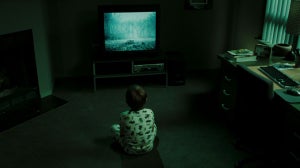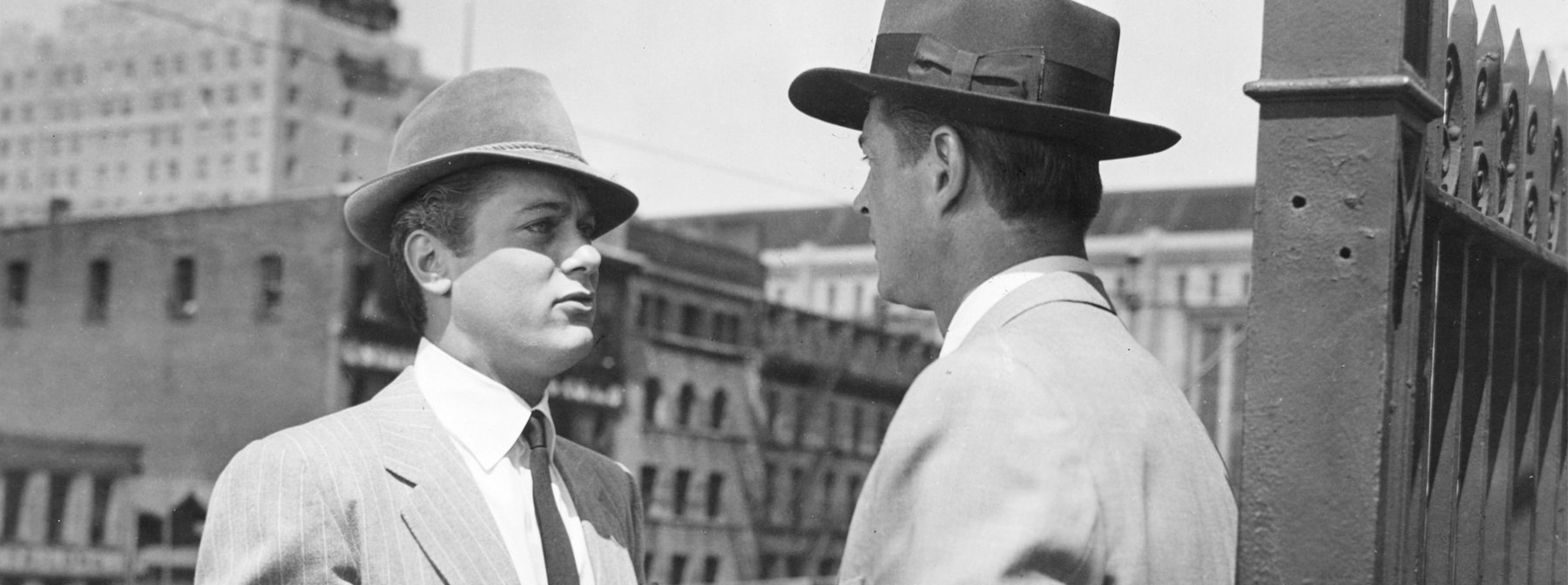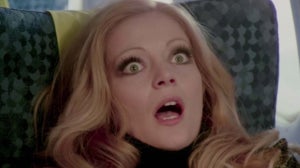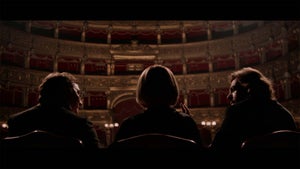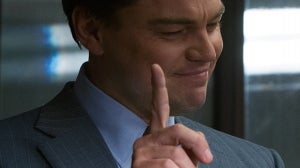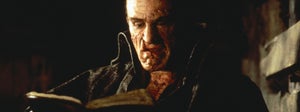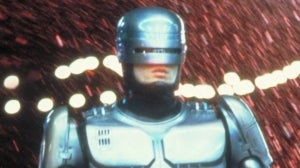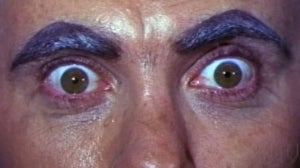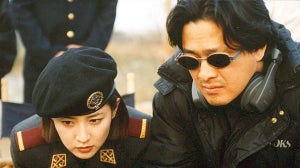
To celebrate the release of Arrow’s superb celebration of cinematic shadows - Four Film Noir Classics Vol 2 featuring The Suspect, The Sleeping City, Thunder on the Hill and Six Bridges to Cross - we’ve put our thinking trench coats on to compile a list of the most definitive film noir moments.
To nail the case, we’ve spread out a table full of clues you’ll need to put together the perfect noir. What follows are a series of sequences that, if you sent a troubled private detective to track them down, they’d come back with the ultimate stylized crime drama - along with a couple of bullet holes for their trouble.
So, brace yourself for darkness, deception, and at least one cigarette break.
Leave Her To Heaven - Based on a book
https://youtu.be/-r3ZotQacms
If you want to create the ultimate film noir, your first stop shouldn’t be the cinema, but a library. So many of the movies outlined below were originally based on books - and the Film Film Noir Classics Vol 2 Limited Edition set even comes with a hardback book to reflect this fact.
Leave Her to Heaven wasn’t just based on a book (by Ben Ames Williams), it centres around an author who meets the movie’s (truly deranged) femme fatale on a train, while she’s reading one of his books. So, the film’s not only based on a book - but so’s the brilliant inciting incident, which leads into some truly wild (and deeply disturbing) set-pieces. Highly, highly recommended.
Mildred Pierce - Confident opening scene
https://www.youtube.com/watch?v=-q2F_2s2npY
The definitive film noirs have a truly ballsy opening scene - whether it’s the insane tracking shot in Touch of Evil, the rule-breaking pool corpse in Sunset Boulevard, or our choice, the compelling (and potentially confusing) opening introduction to Mildred Pierce’s title star.
We hear her name first, Rosebud style, as the last utterance of a dying man - shot to death. Then we see her, Joan Crawford’s Mildred, walking the pier in a fur coat, pain and desperation etched on her face, staring into churning waves she’s ready to join - it’s clear this woman has a dark story worth telling.
And so it turns out, as we go into the twisted events that put her on that pier, centred around her daughter - played by Ann Blyth (who also appears in Six Bridges to Cross). Talk about grabbing your audience - utterly iconic.
The Suspect - Antihero lead
https://youtu.be/4g_3TAa9FrE
From classic takes to modern interpretations, every single film noir features a troubled protagonist with a shady past (even Who Framed Roger Rabbit, a kids’ noir, followed a hard-drinking - and racist against cartoons! - PI) - you just can’t make one with a grumpy hero, who in another film might be the villain.
Genius director Robert Siodmak’s The Suspect is no different - though it is unique. Here we see our downbeat lead walk down his cursed path, making the mistakes he’ll potentially regret for the rest of his life - while we shout at the screen at every dark decision.
Charles Laughton’s stunning performance makes this Hitchcockian adaptation of James Ronald’s novel ‘This Way Out’ work, as we follow every thought process, crafting a compelling character from some extremely evil elements. The trick is, no matter how bad your hero, always make the antagonists worse. The Suspect is underseen, but you’ll be able to own it as part of Arrow’s Film Noir Vol 2 set.
Double Indemnity - The femme fatale
https://youtu.be/Gt2c-VQ6U-8
Some of the greatest roles for women can be found in the very best film noirs, so this is arguably the most essential element to focus on as you put together yours. The perfect femme fatale must be as ugly inside as they are beautiful outside, as deadly as a poisonous spider with the same propensity for weaving webs, with a cunning intelligence you can’t help but admire - even as they drag the men in their lives to their doom.
Barbara Stanwyck’s Phyllis Dietrichson in Double Indemnity fulfils all of these criteria and more - dominating dopey detective Walter (Fred MacMurray) from their very first scene together: standing high at the top of the stairs, as he can only stare in wonder.
The Maltese Falcon - The MacGuffin
https://youtu.be/Yiq5Fkr3yX8
We almost included the Dude’s rug in this list, because the driving object of Coen’s modern noir The Big Lebowski certainly fits the definition: ‘An object, device, or event that is necessary to the plot and the motivation of the characters, but insignificant, unimportant, or irrelevant in itself.’
But we can’t ignore the looming shadow of the The Maltese Falcon over this narrative trope; it’s so intrinsic it’s become iconic. It’s the title of Dashiell Hammett’s original novel, as well as the 1941 film, even though neither narrative is actually about the mysterious statue (which, all the same, provides some pretty nifty symbolism in both).
Touch of Evil - The dirty cop
Man, you really can’t trust anyone in noir movies (they’re so much like real life in that respect, aren’t they?) with even traditionally heroic cops succumbing to the temptations of the dark side time and time again. Whether they’re in the background in films like Sweet Smell of Success, or firmly foregrounded in movies like Pushover, it seems like you can’t even go to the police for help in the best examples of the genre (just imagine that!)
In Touch of Evil, Orson Welles directs and stars as Captain Hank Quinlan - a corpulent cop who wants to take down criminals by any means necessary, even if that means becoming one himself. Quinlan is one of cinema’s greatest crooked characters - who happens to be wielding a badge - inspiring one of film’s most satisfying final act takedowns.
The Big Heat - Organized crime
https://youtu.be/UVgIRAEGvTM
As you’ve probably guessed by now, crime is at the black heart of every single film noir, and sometimes that crime comes organized - with gangsters popping up to either further the plot, or to be the center of it. Noir master Fritz Lang provided an ultimate example in The Big Heat, with the brutal mob boss behind homicide detective Sergeant Dave Bannion’s woes, Mike Lagana (and his psycho assistant Vince Stone), creating two of noir’s nastiest thugs.
Sunset Boulevard - Surprise death
https://youtu.be/_3hajwRww6I
Big spoilers follow, but if you want to add a shock death to your film noir narrative, you can certainly shove it at the end of the picture (and in the title!) as in 1944’s Murder, My Sweet - but the bolder move is to show the body at the start. Bolder still, make the corpse your narrator - as Billy Wilder did in Sunset Boulevard, with William Holden’s omniscient storyteller not so much ready for his close-up, as he is for a close encounter with the nearest mortician from the film’s opening (and closing) moments, making us wait to see how he got there.
Out of the Past - smoking scenes
https://youtu.be/GL6mvmBJuRA
With so many of the classic noirs made before we knew just how bad smoking was for us, cigarettes were a handy prop: a shortcut to tell us how cool various characters were, providing atmospheric clouds that looked great in the beams of light that cut through the darkness of the plot.
We’ve picked Out of The Past as the only example of a film noir where the hero is already smoking when he’s offered another cigarette!
In a Lonely Place - Star-crossed lovers
https://youtu.be/HixNc4uGzns
And so, the end is near - and the only way we can bring this article to a close is with a downbeat finale; with lovers going their separate ways.
Sometimes the hero can’t be with his romantic interest as she’s on her way to prison (or hell), sometimes it’s because his flaws are keeping them apart, but the best way to send your film noir audience out of the darkness of the moviehouse and into the light of the outside world is with a mild case of depression.
And they don’t get much more depressing than In A Lonely Place (that title!), which features one of the most tragic repeated refrains in cinema history (you can watch that above, but brace yourself to go out with a sob).

Related Articles
